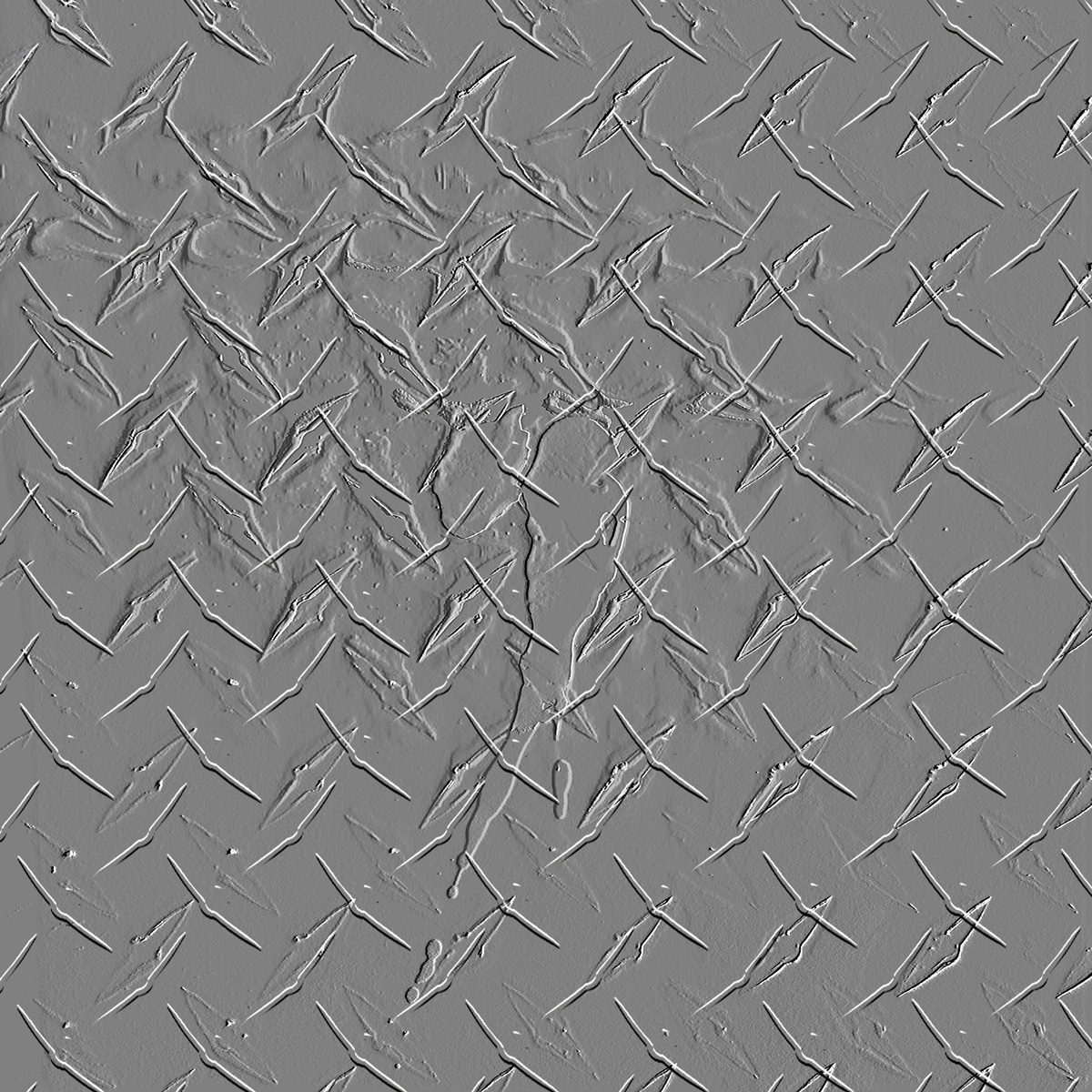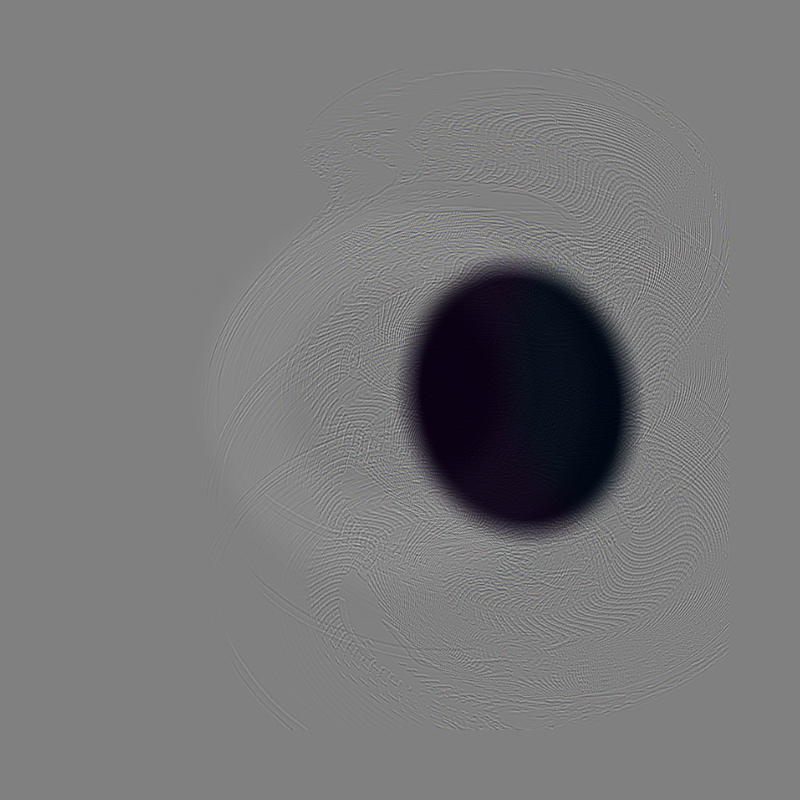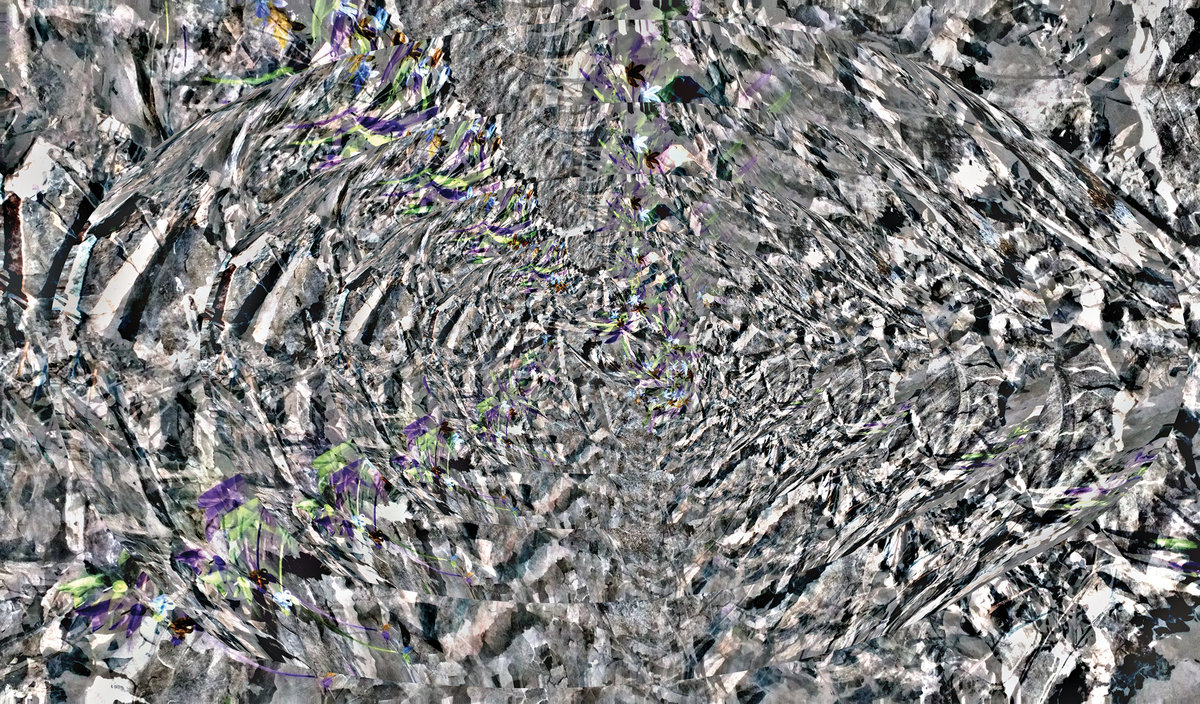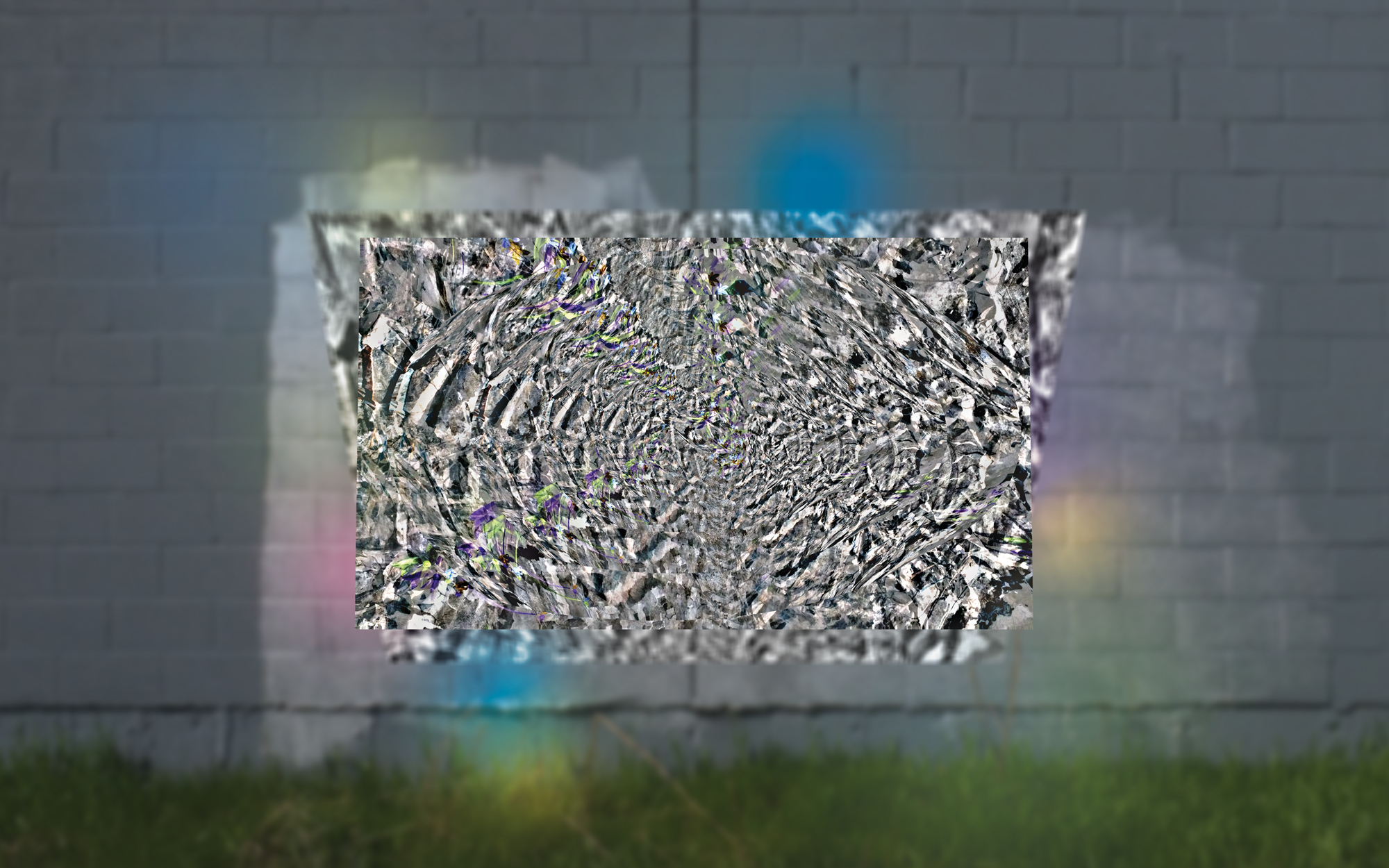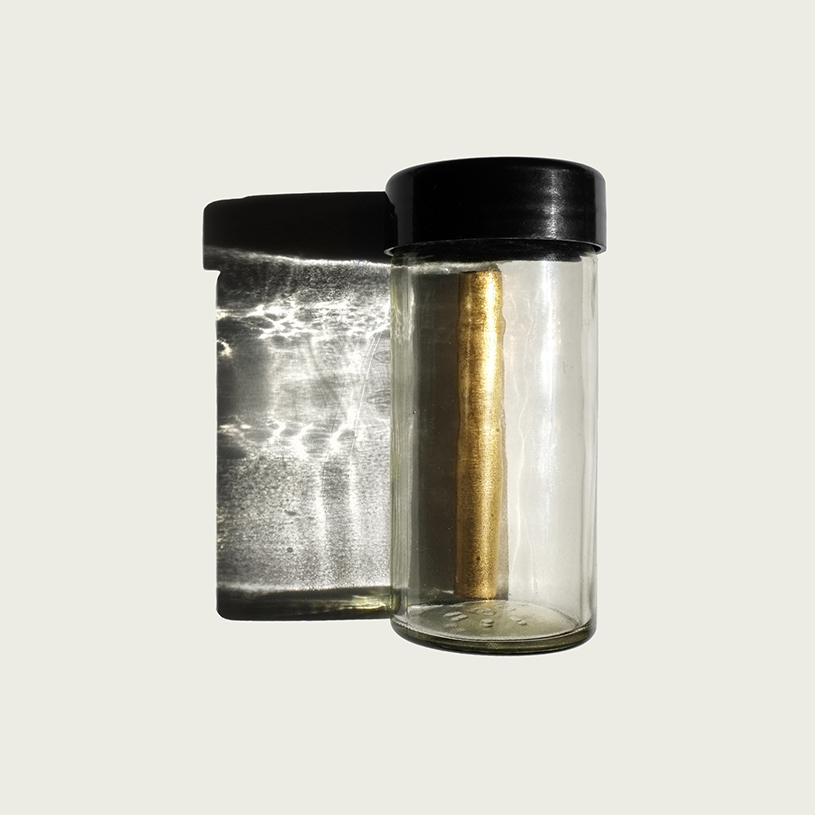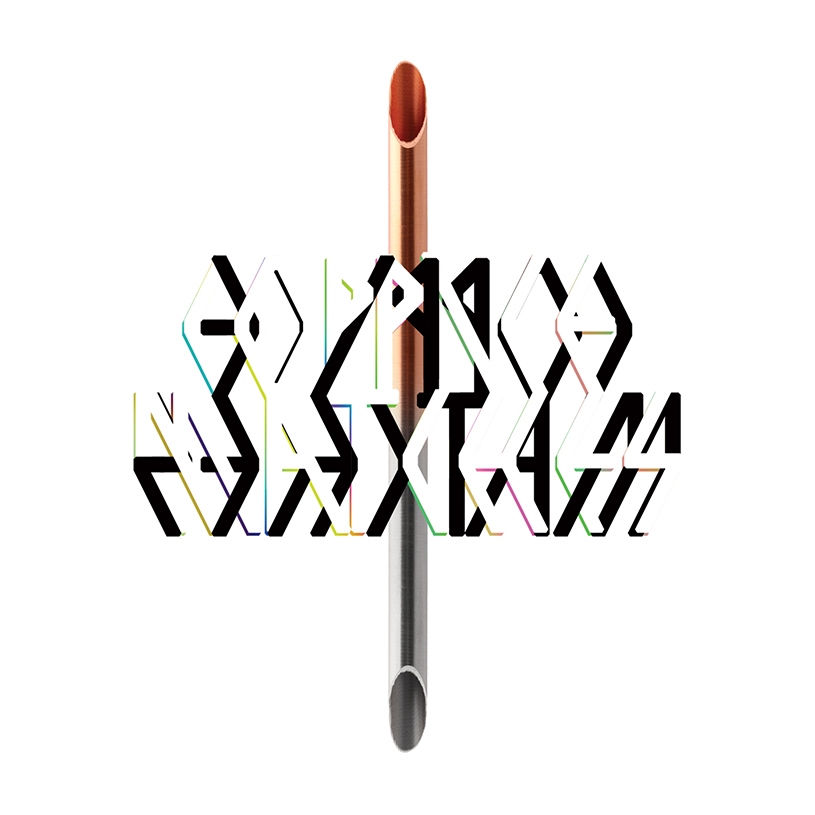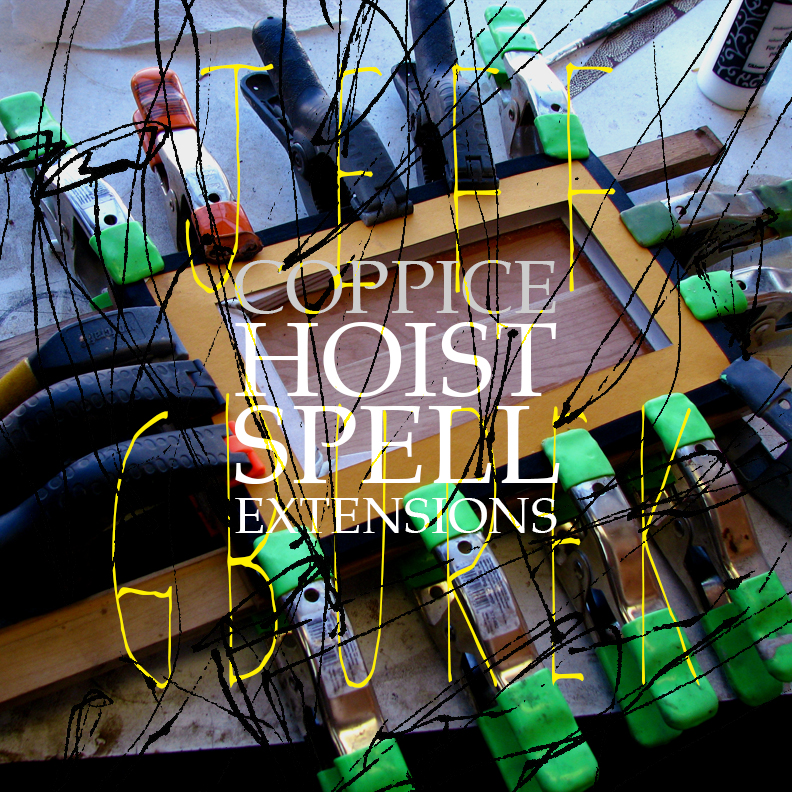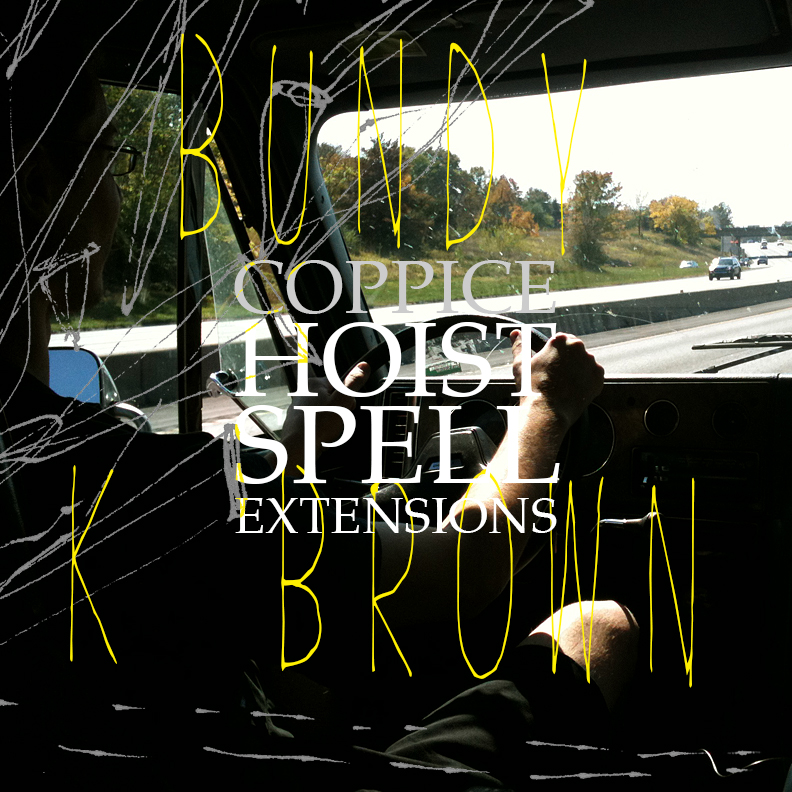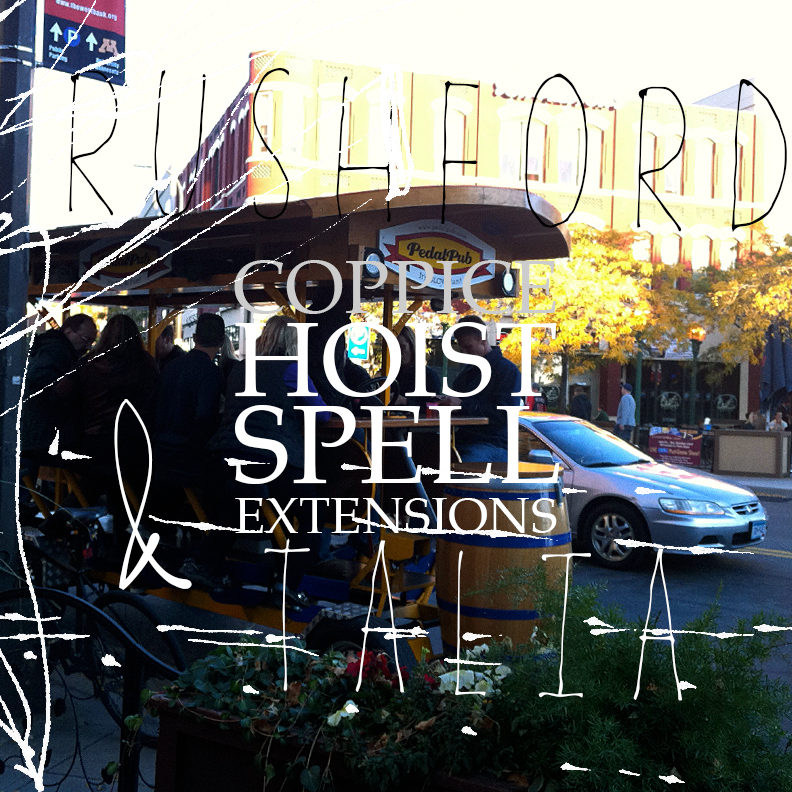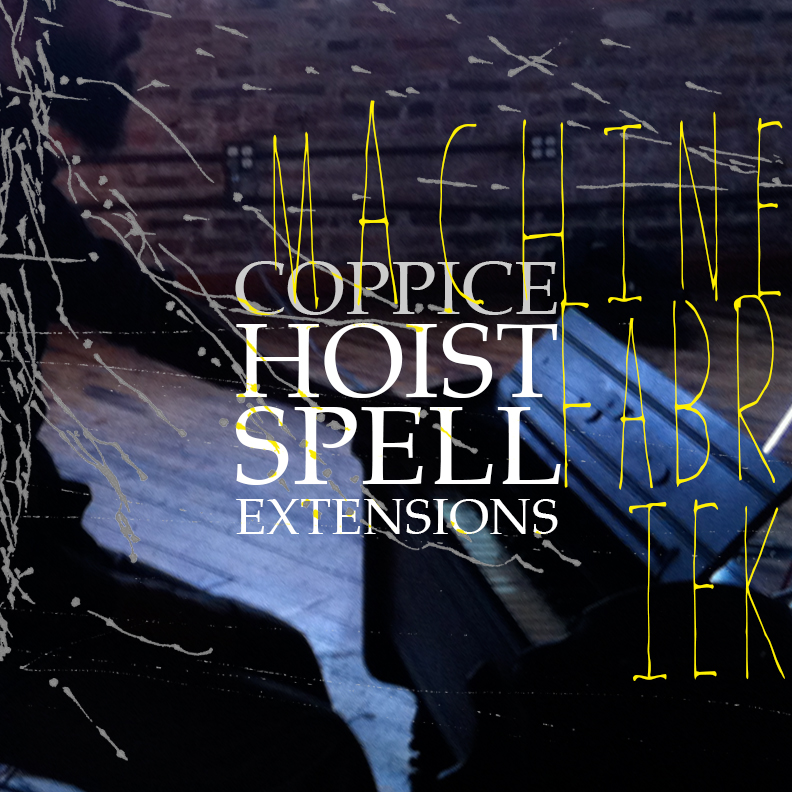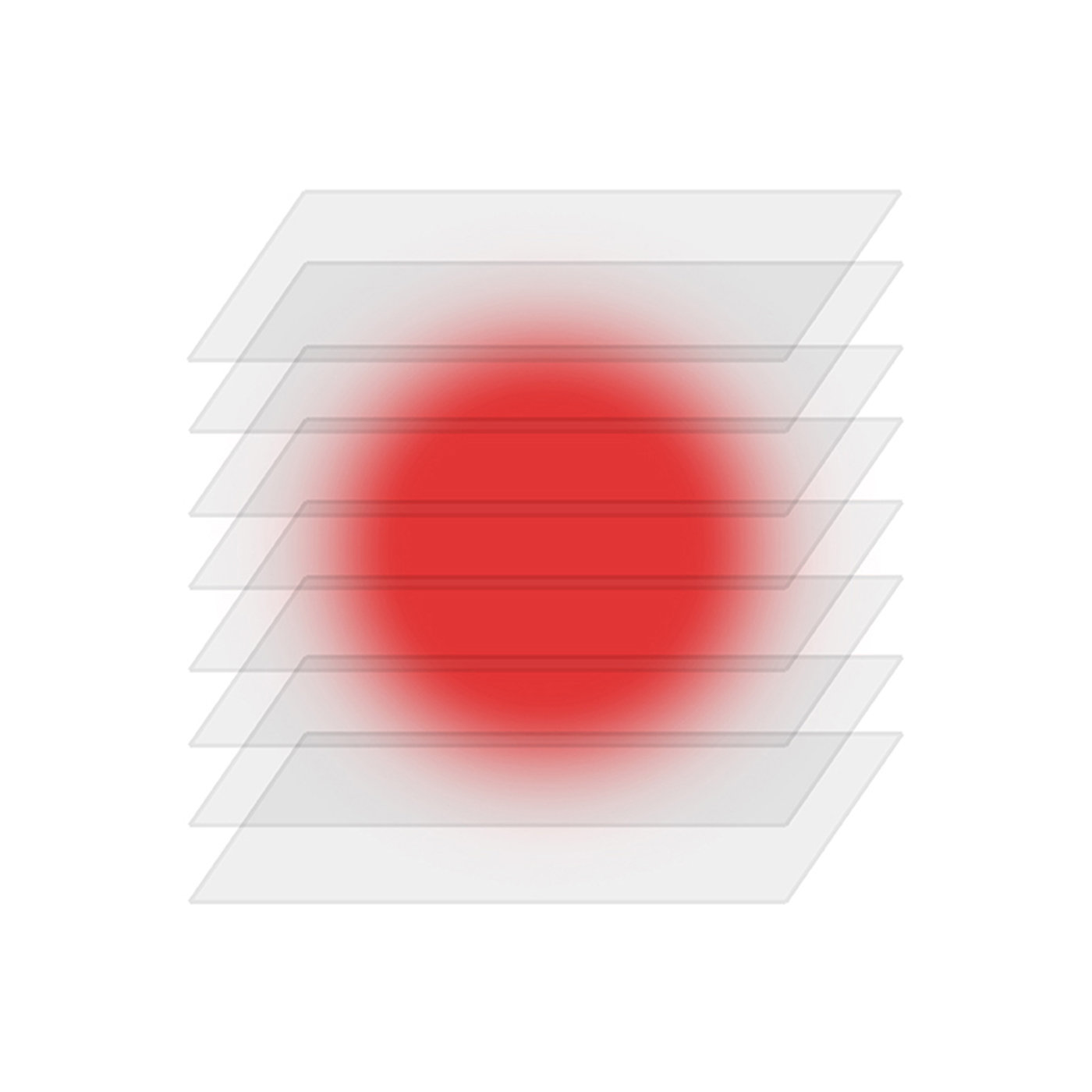-

Stratégies Obliques II
An array of experimental harmony.
Stratégies Obliques II
- Coppice – Bridge to Oblique Landscape (Distance in the Unison with Crosscutting Triangles)
- # ingeos ~ toy.bizarre # – Kdi Dctb 346 [a] [Water / Reverse / You Can Only Make One Dot At A Time / Use Filters / Do We Need Holes? / Remove Ambiguities And Convert To Specifics / Put In Earplugs / Overtly Resist Change / What Mistakes Did You Make Last Time? / Mute And Continue]
Bridge to Oblique Landscape (Distance in the Unison with Crosscutting Triangles) was produced in 2023 in response to an invitation from Fern Recordings (FR) to engage with Brian Eno and Peter Schmidt’s Oblique Strategies, a deck of cards designed to inform a creative process.
An interpretation of John Cage’s In a Landscape (1948) for piano or harp, a composition whose purpose, as influenced by Gita Sarabhai, is “to sober and quiet the mind, thus rendering it susceptible to divine influences.”
The composition is heard through Aircraft Halation, an arrangement of phantom musical glasses in a dual induction of 432 and 440 Hz tunings.
Eight sine waves are evenly spread between 432 and 440 Hz, and shifted between those bounds and their repetitions three octaves down with the spreads between 54 and 55 Hz. These frequencies are faded in and out of eight different virtual speaker positions with two moving and six in fixed locations. Sometimes multiple virtual speakers share frequencies, and sometime multiple frequencies share virtual speaker positions. Eight virtual speaker positions were chosen for their sound, and for being difference between 432 and 440 Hz.
Instances of triangles and their overtones cut across this array of experimental harmony.
- Format: Limited edition of 200 copies white vinyl
- Label: Ferns Recordings (frond_14)
- Artwork: Pole Ka
- Including: Aircraft Halation, Electronics
- Date: August 2024
-

Draw Agreement
A spatiotemporal synthesis of Abdridgements, Observatory Sound, and Sonic Observation.
Draw Agreement
A nesting time capsule that cycles
Folded time and layered space
Sound, mechanical rooms, time travel
Refraction, Reflection, and Diffusion
Rotation, Turning, and Flux
A spatiotemporal synthesis of Coppice’s auditory and musical experiments (2009-2022) with custom, prepared, and modified musical instruments and devices.
This 3CD set abridges Coppice’s first three studies, artificially inserts them into the Yerkes Observatory in Williams Bay, WI, and binaurally captures their diffusion across Elastic’s CLEAT (Chicago Laboratory for Electroacoustic Theatre), a 16-channel 96-speaker sound system.
CD1: Abridgements
- Circumpass (2009-2014)
- Compass (2014-2018)
- Hourglass (2009-2022)
- At the Poles (2014-2016)
Composed by montaging audio quotations from Coppice’s first two studies, «Circumpass» representing Bellows & Electronics (2009-2014), and «Compass» representing Physical Modeling & Modular Syntheses (2014-2018). Representing Phonography & Fiction (2018-2022), «Hourglass» abridges Coppice’s overarching sonic palette across all three studies (2009-2022). «At the Poles» is a conjunction of two unaltered solo performances, one for an Estey pump organ (cir. 1935, prepared in 2013) by Noé Cuéllar (recorded in January 2014), and one for modular synthesis by Joseph Kramer (recorded in May 2016), each of which has been separated from «Soft Crown» from “Vantage/Cordoned” (caduc., CA, 2014), and «Here» from “Green Flame” (caduc., CA, 2018).
CD2: Observatory Sound
- Rotations in Refractor (Simulated Diffusion in the Likeness of the Yerkes Observatory)
- Turning in Reflectors (Simulated Diffusion in Objects against the Yerkes Observatory)
Composed in 2021 using virtual acoustics of the Yerkes Observatory, through which are simulated the diffusions of «Circumpass» and «Compass». Spatial models and field recordings recorded on May 16 and 24, 2018 at the Yerkes Observatory, Williams Bay, WI.
CD3: Sonic Observation
- Clocks in Flux (Elastic Capture-Source Diffusion post-CLEAT)
Composed in 2022, combining a binaural recording of Coppice’s performed diffusion of «Hourglass» and «At the Poles» using CLEAT (Chicago Laboratory for Electroacoustic Theatre), a 16-channel 96-speaker sound system, and 2.1 PA system, with additional headlock audio not heard during the performance. Recorded live on July 8, 2022 at 8:43 PM, at Elastic Arts, Chicago, IL.
Voices: Mark Booth, David Toop, NNN Cook, Jenny Vallier. The production of «Sonic Observation» was supported by an Individual Artists Program Grant from the City of Chicago Department of Cultural Affairs & Special Events.
Thank you to Doyal “Al” Harper, Ed Struble, Jesse Wirth, Kathryn Schaffer, Geoffrey Alan Rhodes, The Chicago 00 Project, The Princess Grace Foundation, Seismograf, Jenny Kendler, Brian Kirkbride, the departments of Art and Technology Studies and Sound at The School of the Art Institute of Chicago, Nathan Keay, Mark Booth, Jenny Vallier, Stephan Moore, and Sébastien Gautheron.
Additional Notes on Abridgments
From the perspective of its third study in Phonography & Fiction, which is characterized by processes of documentary and documentation, Coppice abridges its first two studies by re-composing short pieces out of audio quotations from each. The sonic palette specific to each study is conveyed in just under 7 minutes: Circumpass (2013) representing Bellows & Electronics, and Compass (2018) representing Physical Modeling & Modular Syntheses.
Representing Phonography & Fiction, Hourglass (2022) abridges Coppice’s overarching sonic palette across all three studies, 13 years of work conveyed in the duration of one hour, using the same montage techniques that make up Circumpass and Compass.
While Circumpass is composed of audio samples from the study in Bellows & Electronics, Compass samples not only audio, but the software instruments used in the Physical Modeling & Modular Syntheses study. In order of appearance (with overlaps), Circumpass features quotations from:
- Prune (2011)
- Vinculum (Courses) (2011)
- Discharge Form (2012-2015)
- Bramble (2012-2015)
- An Instance of Agate/Bluing (2012)
- Vinculum T-CP 01.01 007:07 (2009-2013)
- Vinculum PC-1 04.02 000:22 (2009-2012)
- While Like Teem or Bloom Comes (Tipping) (2012-2015)
- Pivot (2011-2014)
- IX. Low F Phase & Chorus (2011-2014)
Instrumentation includes Modified Boombox, Free Reed Boxes, Prepared Pump Organ (Kinder), Prepared Shruti Box (Orange), Apiary, Sphygmomanometer, Accordions, Acoustic Filters, Electronics, and Tape Processes.
In order of appearance (with overlaps), Compass features software instruments (*) and quotations from:
- Surveillance (2016-2018)
- Flut (Tighter) (2014-2016)
- Burning Message/Message Burning (2015-2017)
- Wet Hologram (2016-2018)*
- Afterthought (2016-2018)*
- Fake Memories Object (2018)*
- Country Road (2016-2018)*
- Ashdown (2016-2018)*
- Coverage (2018)*
Instrumentation includes Physical Modeling Synthesis, Modular Synthesis, Wurlitzer 200A Electric Piano (and emulator), Fender Rhodes amp (and emulator), Copper Plate, Tape Case, Transmitters, Inductive Mixing Table I, Coils, Fans, Motors, and Magnetically-Permeable Sheet, and Convolution Effects.
Following the metaphorical scheme of observatory sound, Hourglass represents the sonic observation of Coppice’s first three studies in a series of conjunctions (juxtaposed samples), as would be the observation of celestial motions and events, with transits (single-occurrence samples), orbiting objects (samples spaced out in time), evoking an overall sense of high speed traversal of space, space, and sound. In order of appearance (with many overlaps), Hourglass features audio quotations from many works including previously discarded or unreleased audio:
Orbitals
(Dispersed)Surveillance
Discharge Form
Flut (Tighter)2016-2018
2012-2015
2014-2016First ConjunctionVinculum F-GS 01.02 030:01
☌ Fake Air Storage2009-2013
2016-2020TransitsImpulses for Elaborated Turbulence (Excised)
Index Transfer Outtakes from “Epoxy”
Extracts of “Studies for Three Somewheres”
Excerpts from rehearsals
Fake Air Song (unreleased)
Excerpt from Country Road (Alternate)
Excerpts from The Blessing of No Images2013
2013
2013
2013
2018
2017
2017Second ConjunctionVinculum BK-1 C1.01 000:56
☌ Induction and Bifurcation
☌ Bromine
☌ Brim2011
2014-2016
2012-2015
2009-2012Third ConjunctionFake Memories Object (Descendant)
☌ Dense Day Cooling (Dorsal)2016-2018
2016-2018TransitsExcerpts from rehearsals
Extracts of “Studies for Three Somewheres”2013
2013Fourth ConjunctionVinculum T-CP 01.01 007:07
☌ Emanations2013
2015-2018TransitsExtracts from Vinculum (Coincidence)2011-2014Fifth ConjunctionPivot
☌ Whiting Belt: Territorial Scan
☌ Whiting Belt: Scanned Exit
☌ whirling music by Billie Holiday/The Shadows2011-2014
2014-2016
2014-2016
2018Transits
(Extracts, Scraps,
and Excerpts)Handheld Sampler Extractions from Hoist Spell
Extracts from Blueberry
Extracts from Droopy
Extracts from Ground2014
2016
2013
2016-2018Final ConjunctionExtract from Soft Crown
☌ extract from Here2014
2016-2018At the Poles is a shorter work that juxtaposes unaltered solo performances for prepared pump organ (an Estey performed by Noé Cuéllar in January 2013) and modular syntheses (performed by Joseph Kramer in May 2016), each of which has been previously heard integrated in Soft Crown (from 2014’s Vantage/Cordoned and Soft Crown Transparencies), and Here (from 2018’s Green Flame).- Format: 3CD set
- Label: Ferns Recordings (ferns_stem_15)
- Artwork: Coppice
- Duration: 170 minutes
- Date: January 2023
-

Stewardship to Obsolescence and Preservation
A manufactured sonic frame.
Stewardship to Obsolescence and Preservation: Listening to Specimen Music through Yerkes Observatory's Refractor and Reflector Telescopes
Founded in 1892 and known as the birthplace of modern astrophysics, the Yerkes Observatory in Williams Bay, Wisconsin ceased operations in 2018. That year, its mechanical technologies were captured by Coppice (Noé Cuéllar and Joseph Kramer) to draw parallels between its acoustic signatures and functions, and those of Coppice’s glossary of study since 2009.
Musing on the lack of delimiting frames (Chion, 2016) and vanishing point (Carpenter and McLuhan, 1972) in the auditory, Coppice manufactures a frame out of Yerkes’ architectures and acoustics. Within that frame, Coppice’s creative processes are anecdoted, while pointing to coordinates where conjunctions of its music may be found. Highlighting the intermediary influence of recording and reproduction technologies on perception and perspective – both in limiting and enhancing ways – open-ended questions of actuality and fiction are posed.
In this self-reflexive documentary experiment of music and phonography, obsolescence and preservation are creative resources that span from instruments and devices to shapeshifting spaces. Addressed directly, the listener observes sonic identities in flux, and finds footing through retrospection, projection, and imagination.
Coppice’s sonic artifacts in alignment with Yerkes’ telescopes intersect multiple domains of time, space, and scale. How is experimental music conceived over time and what is seen through it?
Listen to the peer-reviewed audio paper on Seismograf.
Read the script on Issuu.
- Format: Script and audio paper
- Label: Seismograf
- Artwork: Coppice
- Duration: 20 minutes (60 minutes, extended version)
- Including: Mark Booth and Jenny Vallier (narrators)
- Date: April 2021
-

Chrome/Boundaries Scaling Stereo Images and Promises (Some False)
An asymmetrical emblem of balance.
Chrome/Boundaries Scaling Stereo Images and Promises (Some False): Viewing Microphones and Listening Cameras
Chrome/Boundaries reports the long distance realities of documentation. Its images assimilate sight and hearing and the mechanics of audiovisual/information frames – relations at times incongruous. Things we see but do not hear, things we hear but do not see-through.
Executed, composed, and presented during Syros Sound Meetings’ Sounding Paths Residency (Ano Syros), and in Athens, July 2018.
Read: Imaginary Correspondence (2018) and TinyMixTapes Interview (2018)
- Format: Video
- Duration: 27 minutes
- Including: Participations and contributions from Mitchell Akiyama, Renato Grieco, MP Hopkins, Eva Matsigkou, Savvas Metaxas, Phill Niblock, and David Toop.
- Date: December 2018
-

Head Turning Songs
Digital accommodation for songs with concrete voices.
Head Turning Songs
- Dense Day Cooling
- Coverage
- The Wall
- Flywheel
- Fake Memories Object
- Format: Digital
- Artwork: Coppice
- Including: Coils, Fans, Motors, and Magnetically-Permeable Sheet, Copper Plate, Fender Rhodes Piano Bass, Modular Synthesizers, Multi-Material Filter, Pyrex Vessel, Transmission Line
- Date: May 2019
-

Wet Hologram
The before and after pictures.
Wet Hologram
- Wet Hologram
- Wet Hologram (Transistor)
- Format: Digital
- Artwork: Coppice
- Including: Copper Plate, Modular Synthesizers, Multi-Material Filter
- Date: April 2019
-

Surreal Air Fortress
Post-industrial device music.
Surreal Air Fortress
- Coverage
- Surveillance
- The Wall
- Exposure
- Solvent/Emulsion
- Wet Hologram
- Format: LP
- Label: Entr'acte (224)
- Artwork: Coppice
- Including: Coils, Fans, Motors, and Magnetically-Permeable Sheet, Inductive Mixing Table I, Prepared Pump Organ (Kinder), Modified Boombox III, Multi-Material Filter, Tape Case
- Date: April 2018
-

XYZ
A chiral object of memory.
XYZ
- Dense Day Cooling (Ventral)
- Fake Memories Object (Descendant)
- Fake Memories Object (Antecedent)
- Dense Day Cooling (Dorsal)
- Format: C22 lo-fi ferro cassette
- Label: Falt (Falt 9)
- Artwork: Chemiefaserwerk
- Including: Copper Plate, Coils, Fans, Motors, and Magnetically-Permeable Sheet, Fender Rhodes Piano Bass, Multi-Material Filter, Transmission Line
- Date: January 2018
-

Green Flame
Music for driverless dream cars on their self-driven way to the junkyard.
Green Flame
- Ground
- Is This The Spot?
- Country Road
- Afterthought
- Here
- Cul-de-sacs
- Ashdown (Slimy)
- Is This The Spot?
- Emanations
- Format: CD
- Label: caduc. (CA25)
- Artwork: Coppice
- Including: Capillaries, Copper Plate, Fender Rhodes Piano Bass, Field Generating Boxes Transmitters
- Date: May 2018
-

Open On Occluded Conditions
A molten image of songs, falsehood, and deflection.
Open On Occluded Conditions
- Memory on Fake Fire Screen (POV)
- Disappearing Act Monitored Over Fake Game Console
- Lodge Message To Be
- Burning Message/Message Burning
- Inscription
- Sweaters
- Thought with Pollution at Simulation of Construction Site
- Intercalary
- Thought with Pollution at Simulation of Construction Site (Continued)
- Disgusting Knot
- Slimy Hideout
- Burning Message/Message Burning (Embossed Emporium)
- Format: Digital
- Label: Untitled Folder (untitled folder 9)
- Artwork: Coppice
- Including: Multi-Material Filter
- Date: December 2017
-

Fake Air Storage
#777777
Fake Air Storage
Fake air was modeled between 2015-2016 and used in many Coppice compositions of that period. Read about and listen to Fake Air Storage at Noemata.
- Format: Digital
- Label: Noemata
- Artwork: Coppice
- Duration: 45 minutes
- Date: July 2020
-

Preamble to Newly Cemented Dedication to Freedom
Sensual music for a folding world in which songs are directions to look.
Preamble to Newly Cemented Dedication to Freedom
- Induction and Bifurcation
- Flut (Tighter)
- Sucked In
- Format: 3" CD-R
- Label: Aposiopèse (APO_11)
- Artwork: Coppice
- Including: Multi-Material Filter
- Date: December 2016
-

Blueberry
An object induced by manipulated magnetic fields.
Blueberry
Blueberry is an object induced by manipulated magnetic fields.
Opportunities to receive Blueberry were extremely limited; none remain available at this time.
For more information, please visit suppedaneum.com
- Format: 10" lathe and double CD-R set
- Label: Suppedaneum (no. 12)
- Artwork: Coppice
- Including: Coils, Fans, Motors, and Magnetically-Permeable Sheet, Inductor Table, Prepared Pump Organ (Kinder), Modified Boombox IV, Multi-Material Filter, Fender Rhodes Piano Bass, Inductive Mixing Table I
- Date: December 2016
-

Whiting Belt
Territory sees digitally held air seeing edges holding.
Whiting Belt
- Territorial Scan
- Sweet Thread (Topple)
- Scanned Exit
- Format: Digital
- Label: Panospria (PAN 097)
- Artwork: Coppice
- Including: Fender Rhodes Piano Bass, Handheld Samplers, Prepared Pump Organ (Kinder), Transmitters
- Date: September 2016
-

Matches
A story with many holes.
Matches (Saga Edition)
- Held Cascade
- Bromine
- Labile Form
- Discharge Form
- Subparallel Episode
- Bramble
- Caper
- Format: Limited edition of 100 CDs in manually-assembled packaging (jewel case, diamond aluminum mesh, colored thread, transparencies, and hand-numbered card)
- Label: Category of manifestation: (KIND_2)
- Artwork: Coppice
- Including: Accordion, Amplified Melodica, Fire Bellows, MIDI Box, Modified Boombox I, Monophonic Oscillator, Prepared Pump Organ (Kinder), Shruti Box (Orange), Shruti Box (Pink), Sphygmomanometer, Transmitters, Wooden Input Bars
- Date: September 2015
-

Bypass Ideal
A proposed “idealisation” of experience of parts.
Bypass Ideal
- Format: Edition of 100 C42 cassettes in clear poly shell case with risograph print
- Label: Hideous Replica (HR9)
- Artwork: Coppice
- Including: Modified Boombox III, Prepared Pump Organ (Kinder), Transmitters
- Date: May 2015
-

Hoist Spell Extensions
Series of remixes, interventions and interpretations of Hoist Spell.
Hoist Spell Extensions
- Hoist Spell (The Paver Version)
- Hoist Spell (Michael Pisaro Remix)
- Hoist Spell (Machinefabriek’s Philicorda Version)
- Hoist Spell (Rushford & Talia Remix)
- Hoist Spell (mAAs Remix)
- Hoist Spell (James Hoff Remix)
- Heist Poll (Bundy K. Brown)
- Hoist Spell (Jeff Gburek Remix)
- In The Pulse The Spirit (Joachim Nordwall)
- Hoist Spell (VA AA LR Remix)
- Hoist Spell (Labycz’s Hardware Construct)
- Hoist Spell (Lescalleet Reconstruction)
- Format: Digital files
- Label: Quakebasket (qb 25.1)
- Artwork: Coppice
- Date: April 2014
-

Ex
Studies, alternate takes, and live versions from the Big Wad Excisions sessions.
Ex
- Big Wad Experiments
- Handheld Sampler Extractions From Hoist Spell
- Alternate Turbulence
- Corrugation Exercise
- Snuck Keel (Live)
- Sop Version (Live)
Ex includes an excision of the original board photographed for the Big Wad Excisions artwork, a CD-R with studies, alternate takes, and live versions of material revolving around Big Wad Excisions, and a handwritten carbon note. The twenty copies produced were offered in support of Coppice’s Compound/Excisions tour in March 2014.
- Format: CD-R
- Label: Self-released
- Artwork: Coppice
- Including: Handheld Samplers, Modified Boombox III, Prepared Pump Organ (Kinder), Transmitters
- Date: March 2014
-

Big Wad Excisions
Accretion, excision, nostalgia.
Big Wad Excisions
- Snuck Keel
- Impulses for Elaborated Turbulence (Excised)
- Sop
- Hoist Spell
- Format: CD in semi-gloss folded insert packaged in a dual slot hi-gloss outsized gatefold card mini LP, album type, sleeve with booklet
- Label: Quakebasket (qb 25)
- Artwork: Coppice
- Including: Handheld Samplers, Modified Boombox III, Monophonic Oscillator, Prepared Pump Organ (Kinder), Prepared Pump Organ (Estey), Transmitters
- Date: October 2013
-

Soft Crown Transparencies
A navigable composition for software.
Soft Crown Transparencies
Soft Crown Transparencies is a ‘navigable composition for software’ that repositions the listener in a new type of active listening. It provides coordinates for engaging shifts of vantage point (as all sound layers develop in time) through a navigable vertical axis on the screen. Multiple sectors are accessible for close listening of different points of the interior of a prepared pump organ and of multiple generations of tape processes.
Soft Crown Transparencies isn’t a game or a tool. It invites the listener to figure a porous journey through a listening format that they can intersect as the music unfolds – to obtain finer details of the music’s materialities and to localize additional audio not found in the fixed stereo mix of Soft Crown.
Purchase at the Apple App Store here.
Special thank you to Mathieu Ruhlmann, and to Joey Beaver, Cole Friel, Ryan Hogg, Anthony Martinez, Tim Mena, Brad Nayman, Phil Pobanz, Brent Reardon, and Kyle Schroeder for their help in the construction of portions of the Estey Expander Module electronics present in Soft Crown.
- Format: Software (MacOS 10.6.8 or later)
- Label: Self-released
- Artwork: Coppice
- Including: Estey Expander Module, Multi-Material Filter, Prepared Pump Organ (Estey), Sphygmomanometer
- Date: February 2014
-

Vantage/Cordoned
Two cordoned-off vantage points.
Vantage/Cordoned
- So Lobes Drape As Such Gills Over A Hanger’s Pit
- Soft Crown
A special thank you to Joey Beaver, Cole Friel, Ryan Hogg, Anthony Martinez, Tim Mena, Brad Nayman, Phil Pobanz, Brent Reardon, and Kyle Schroeder for their help in the construction of portions of the Estey Expander Module electronics.
- Format: CD-R
- Label: caduc. (CA03)
- Artwork: Coppice
- Including: Estey Expander Module, Modified Boombox I, Multi-Material Filter, Prepared Pump Organ (Estey), Prepared Pump Organ (Kinder), Sphygmomanometer
- Date: February 2014
-

Compound Form
A summer amalgam.
Compound Form
Compound Form is a composition for amplified prepared pump organ (Kinder) and tape processes in an extended musical arrangement of various compositions.
Bramble (2012), Scour (2009), So Lobes Drape As Such Gills Over A Hanger’s Pit (2013), Pivot (2011), While Like Teem or Bloom Comes (Tipping) (2012), and Brim (2009) are present in Compound Form.
Compound Form was performed numerously in Chicago and throughout tours. Its instrumentation sprung compositions that formed the core of Coppice’s live repertoire between 2012–2014, staged stereo recitals presented close-up to the audience.
Recorded live on October 26, 2012 at the crow with no mouth series, Studio Z; St. Paul, MN.
- Format: CD-R
- Label: Triple Bath (TRB.038)
- Artwork: Coppice
- Including: Acoustic Filters, Modified Boombox I, Modified Boombox III, Modified Boombox IV, Prepared Pump Organ (Kinder), Transmitters
- Date: May 2013
-

Cores/Eruct
What is kept in.
Cores/Eruct
- Bluing
- Son Form
- Seam (Kinder)
- While Like Teem or Bloom Comes (Tipping)
- Blueing
- Format: CD in in gatefold printed cardstock digisleeve with resealable poly bag
- Label: Category of manifestation: (KIND_1)
- Artwork: Coppice
- Including: Handheld Funnels, Modified Boombox I, Modified Boombox III, Prepared Pump Organ (Kinder), Shruti Box (Orange), Transmitters
- Date: February 2014
-

Epoxy
Artifacts on tape pulled from cassettes used in a dual tape-processing device.
Epoxy
- A Deflective Index
- A Refracted Index of “Seam” with Girls
All index transfers are artifacts on tape pulled from cassettes used in a dual tape-processing device. Side B contains a sequence of trio performances of Seam (2010), recorded between 2011-2012 in Chicago. In order of appearance: Carol Genetti, Sarah J. Ritch, Berglind Tómasdóttir, Julia A. Miller.
- Format: C41 (limited, hand numbered, in three colors)
- Label: Pilgrim Talk (PT26)
- Artwork: Nick Hoffman
- Including: Modified Boombox I
- Date: April 2013













